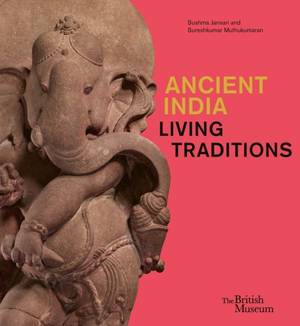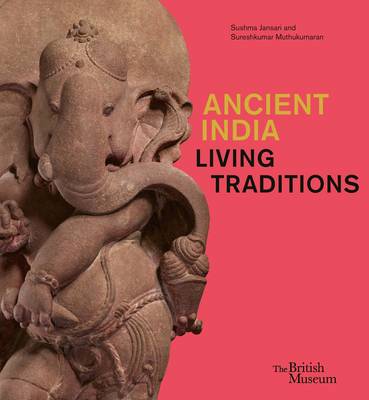
- Afhalen na 1 uur in een winkel met voorraad
- Gratis thuislevering in België vanaf € 30
- Ruim aanbod met 7 miljoen producten
- Afhalen na 1 uur in een winkel met voorraad
- Gratis thuislevering in België vanaf € 30
- Ruim aanbod met 7 miljoen producten
Zoeken
€ 66,50
+ 133 punten
Omschrijving
"The catalogue frames the objects in a history of these religions, setting out the connection between ancient and modern India... Along with the individual history of each object, further close-up studies of each item can sometimes be more rewarding than a wideangle broad sweep. Many of the pieces in this exhibition are from the British Museum's own collection."
- Open Magazine
Ancient India was a dynamic; cosmopolitan centre of creativity. The visual traditions of its major indigenous religions were closely interrelated; reflecting political power; changes in peoples' daily lives and artistic innovation. Exported beyond the Indian subcontinent in antiquity; these three major religions - Jainism; Buddhism and Hinduism - are living traditions and their devotional works of art impact on the daily life of billions of people across the world.
This major new publication traces the development of religious imagery from around 100 BCE; when it focused on the depiction of nature spirits; to 600 CE; by which time devotional illustrations of Jain; Buddhist and Hindu deities and teachers had taken definitive shape. Moving from symbolic to human form; such imagery employed attributes; divine attendants and animal vehicles that we still recognise today and are found across the global diaspora. Examples of these ancient illustrations are found not only across South Asia; but also in Central and Southeast Asia; China and Japan - and they transformed the religious landscape of these regions too.
The authors explore fascinating topics such as the first devotional illustrations of the twenty-four jinas (enlightened Jain teachers); the transformation from symbolic depictions of the Buddha to those that showed him in bodily form for the first time; and the formalisation of divine representations and devotional sculpture in Hindu traditions. This beautifully illustrated book reveals the ancient roots of the illustrations and depictions of these world religions that many will find familiar today.
- Open Magazine
Ancient India was a dynamic; cosmopolitan centre of creativity. The visual traditions of its major indigenous religions were closely interrelated; reflecting political power; changes in peoples' daily lives and artistic innovation. Exported beyond the Indian subcontinent in antiquity; these three major religions - Jainism; Buddhism and Hinduism - are living traditions and their devotional works of art impact on the daily life of billions of people across the world.
This major new publication traces the development of religious imagery from around 100 BCE; when it focused on the depiction of nature spirits; to 600 CE; by which time devotional illustrations of Jain; Buddhist and Hindu deities and teachers had taken definitive shape. Moving from symbolic to human form; such imagery employed attributes; divine attendants and animal vehicles that we still recognise today and are found across the global diaspora. Examples of these ancient illustrations are found not only across South Asia; but also in Central and Southeast Asia; China and Japan - and they transformed the religious landscape of these regions too.
The authors explore fascinating topics such as the first devotional illustrations of the twenty-four jinas (enlightened Jain teachers); the transformation from symbolic depictions of the Buddha to those that showed him in bodily form for the first time; and the formalisation of divine representations and devotional sculpture in Hindu traditions. This beautifully illustrated book reveals the ancient roots of the illustrations and depictions of these world religions that many will find familiar today.
Specificaties
Betrokkenen
- Auteur(s):
- Uitgeverij:
Inhoud
- Aantal bladzijden:
- 312
- Taal:
- Engels
Eigenschappen
- Productcode (EAN):
- 9780714124995
- Verschijningsdatum:
- 22/05/2025
- Uitvoering:
- Hardcover
- Formaat:
- Genaaid
- Afmetingen:
- 240 mm x 258 mm
- Gewicht:
- 1655 g

Alleen bij Standaard Boekhandel
+ 133 punten op je klantenkaart van Standaard Boekhandel
Beoordelingen
We publiceren alleen reviews die voldoen aan de voorwaarden voor reviews. Bekijk onze voorwaarden voor reviews.








